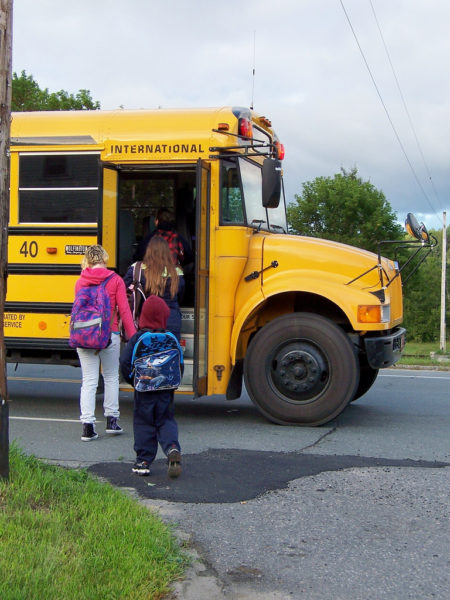Tips for a Safe Bus Ride & How to Stop for A School Bus
Some 25 million students nationwide begin and end their day with a trip on a school bus. School buses are the safest way for students to travel, but they also need to do their part to stay alert and aware of their surroundings to prevent injury.

Getting on the Bus:
- When waiting for the bus, stay away from traffic and avoid roughhousing or other behavior that can lead to carelessness
- Do not stray onto the street, alleys or private property
- Line up away from the street or road as the bus approaches
- Wait until the bus has stopped and the door opens before approaching the bus
- Use the handrail when boarding
Behavior on the Bus:
- If seat belts are available on the bus, buckle up*
- Don’t speak loudly or make loud noises that could distract the driver
- Stay in your seat
- Don’t put your head, arms or hands out the window
- Keep aisles clear of books and bags
- Get your belongings together before reaching your stop
- Wait for the bus to stop completely before getting up from your seat
*Watch this video of a side impact crash, which shows the difference of wearing and not wearing a seat belt on the bus.
Getting Off the Bus:
- Use the handrail when exiting
- If you have to cross in front of the bus, first walk at least 10 feet ahead until you can see the driver
- Make sure the driver can see you
- Wait for a signal from the driver before crossing
- When the driver signals, look left, right, then left again. Walk across the road and keep an eye out for sudden traffic changes
- If your vision is blocked, move to an area where you can see other drivers and they can see you
- Do not cross the center line of the road until the driver signals it is safe
- Stay away from the rear wheels of the bus at all times
How to Stop for A School Bus
Drivers have to be extra careful around school buses. Buses make frequent stops and they’re usually full of little humans who might walk out into the street. School bus laws are in place to protect young lives, and breaking those laws can result in expensive tickets and even license suspension.
Take Aways:
- Don’t pass school buses when the red lights are flashing.
- Vehicles behind the bus in the same lane or neighboring lanes going in the same direction as the bus have to stop.
- If you’re on the same street as a stopped school bus going but driving in the opposite direction, the type of divider or median will determine whether you have to stop:
- If directions of traffic are only separated by a yellow pavement marking or center turn lane, you will need to stop.
- If there is a physical barrier, such as grass, trees, or concrete separating your vehicle and the school bus, it’s okay to keep driving.
Sources:
National Safety Council http://www.nsc.org/learn/safety-knowledge/Pages/news-and-resources-school-bus-safety-rules.aspx
Aceable https://www.aceable.com/safe-driving-videos/when-to-stop-for-a-school-bus/
Being aware of your surroundings is very important when waiting for the bus.